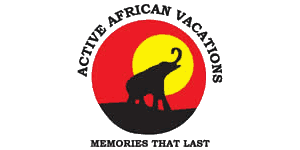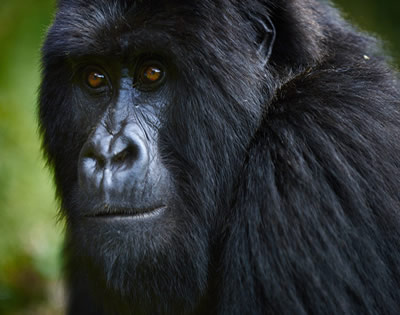
Gorilla Trekking in Uganda: What to know before trekking gorillas in Uganda
Gorilla Trekking in Uganda: Dream about visiting a country with amazing and good-looking endangered primates. Gorilla trekking in Uganda, Rwanda and Congo will not leave you the same once you choose to book a trip to go for it. Gorilla trekking is done in Mgahinga, Bwindi, Virunga and the volcanoes national park in Rwanda (gorilla trekking in uganda from kigali).The mountain gorilla trekking in uganda starts very early in the morning with a cup of tea and a briefing at 7 am at the park headquarters with a trained tour guide or ranger who will brief you on the rules and the regulations of gorilla trekking in uganda bwindi africa safari, for example do not get closer to the gorillas once you have a cold, do not mimic the gorillas because they may make them more angry and aggressive, do not litter anything around the gorillas, avoid feeding the gorillas once you reach there and see them, do not make noise because you may make them aggressive. You will be advised to bring snacks and a bottle of water into the forest so that you will not become too tired and exhausted after learning the rules and regulations. After that, you will start hiking through the Bwindi forest. Because these primates graze over great distances, they are difficult to locate. Your professional ranger guide will assist you in finding these primates by tracing the feet they left behind on their way to graze. You are permitted to spend more than an hour playing and taking pictures with these primates once you locate them.
History and Facts about Bwindi impenetrable national forest.
Bwindi Impenetrable Forest National Park was designated in 1991 as a national park due to its biological significance. This park was later included in the UNESCO World Heritage list in 1994, and the park expanded by 10 square kilometers. Gorilla trekking brought Bwindi Forest to the attention of the world! A number of mountain gorillas worldwide reside in forests. Of the 620 mountain gorillas that may still be in existence worldwide, the forest is home to over 360 of these critically endangered animals. They face severe threats from diseases, habitat destruction, and poaching.
Bwindi, one of the most well-known national parks in East Africa, is undoubtedly one of the oldest habitats on the continent, having existed for over 25,000 years. More than any other national park in Uganda, the park is home to 120 different species of mammals. Due to the park’s deep jungle, sightings are uncommon; but, on a fortunate day, one may be able to see 11 different primate species, including chimpanzees, African golden cats, L’Hoest’s monkeys, and the uncommon gigantic forest hog.
Distance from Kampala to Bwindi by Road.
It takes about 540 kilometers, or 9 to 10 hours, by car to get from Kampala to Bwindi. Mountain gorillas in Bwindi Impenetrable Forest National Park are critically endangered and make for a popular safari trip. An increasing number of people travel to Uganda’s Gorilla Safari, located in the country’s southwest, each year to witness these remarkable animals. However, safaris into national parks are just getting started, as we can see. Please do not hesitate to contact Active African Vacation with any queries you may have about gorilla trekking permits, transportation charges, or anything else. Moreover, the principal point of entry for foreign visitors into Uganda is Entebbe International Airport, situated 46 square kilometers away from Kampala.
By Roads: There are several routes to reach Bwindi Impenetrable National Park if you choose to drive. These routes can be used for a 3-day safari that involves gorilla trekking in Uganda or for a 7-day tour that combines primate and wildlife watching. Remember that going on a gorilla trek is one of the most daring travel experiences in Uganda.
For example, via the Mbarara-Masaka and Kibale-Mbarara highways from Kampala to Bwindi will take nine to ten hours if you want to see the park.
From Queen Elizabeth National Park in Mweya, it is also feasible to travel 170 kilometers (three hours) to Bwindi Impenetrable National Park.
Kabale, Kanungu, and Buhoma, the main locations of the park, are 440 kilometers away, or six hours’ drive away.
It is 100 kilometers driving by car from Kabale to Buhoma. But Nkuringo is ninety kilometers away.
Apart from driving, another option is to choose for a local flight operated by Aero Link, which departs from Entebbe Airport or Kajjansi Airfield and lands at Kisoro Airport. After that, in one hour and ten minutes, a guide will pick you up and take you to Bwindi, where you can check into the resort that you have reserved. After that, those scheduled to go gorilla trekking in the Buhoma region would have to fly to the Kayonza Airstrip on a charter airplane.
On the edge of the Rift valley in southwest Uganda, Bwindi Impenetrable Forest National Park is located. The park is a primate safari site for “great mountain gorillas.” It is well-known for being one of Uganda’s oldest and most biologically diverse rainforests, home to over 400 different plant species, 120 different mammal species, 350 different bird species—including endemic species from the Albertine Rift—and, most notably, for safeguarding an estimated 600 mountain gorillas. Other primates that can be observed in the park include monkeys, chimpanzees, and baboons.
The park was created as a conservation area in 1991 and recognized as a UNESCO Natural World Heritage Site in 1994 with the goal of protecting our precious mountain gorillas.
Where is gorilla trekking in Uganda? Gorilla trekking is the primary draw for Bwindi Impenetrable Forest National Park. This is because gorillas have a unique and beautiful body structure, and because of our shared DNA, gorilla behavior and human behavior are fairly similar. An hour-long activity called “gorilla trekking” gives visitors the chance to interact with gorillas. Your tour guide will help you choose which gorilla group to hike with because this activity can take a half or full day, depending on the gorillas’ foraging tendencies. Gorilla hikes in Bwindi costs USD 700 for non-resident foreigners and USD 600 for those who are also natives of East Africa per hike.
If you get in touch with a tour operator ahead of time, booking a convenient trip to the Bwindi Impenetrable National Park is easy. Because there is so much breathtaking natural landscape to take in, driving from Kampala to Bwindi is a more satisfying and memorable experience than flying. Due to long driving days, road travel may seem exhausting, but the journey is worthwhile.
Rwanda gorilla safari packages
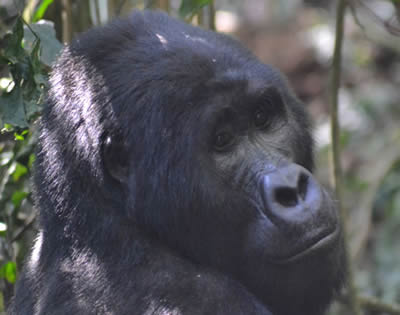 5 Days Rwanda Gorilla Trekking Safari
5 Days Rwanda Gorilla Trekking Safari
5 Days Rwanda Gorilla Trekking Safari gives you exceptional Budget Gorilla Trekking in Rwanda.
3 Days Rwanda Gorilla Trekking Safari
3 Days Rwanda Gorilla Trekking Safari takes you Gorilla Trkeking at Budget at Volcanoes National Park.
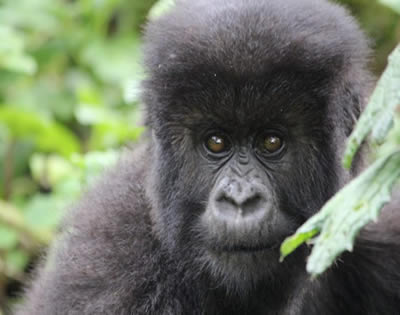
4 Days Gorilla Trekking Tour Rwanda
4 Days Gorilla Trekking Tour Rwanda goes to Volcanoes National Park where you trek the Mountain Gorillas.
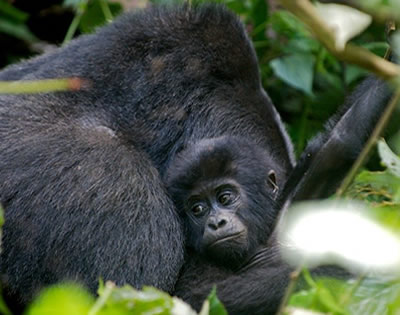
7 Days Rwanda Gorillas & Chimps Safari
7 Days Rwanda Gorillas & Chimps Safari gives you Gorilla Trekiing and Chimpanzee tracking.
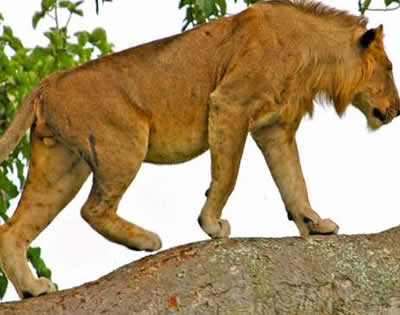
7 Days Rwanda Uganda Safari Tour
7 Days Rwanda Uganda Safari Tour gives you unique adventures in Uganda and Rwanda on vacation.
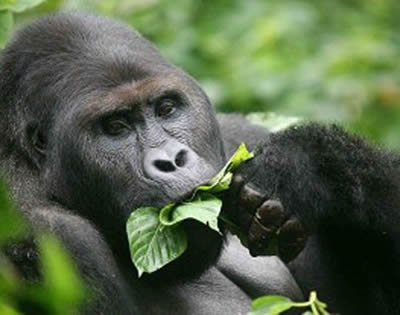
7 Days Congo Gorilla Trekking Tour
7 Days Congo Gorilla Trekking Tour goes to Virunga National Park, Kahuzi Biega National Park.
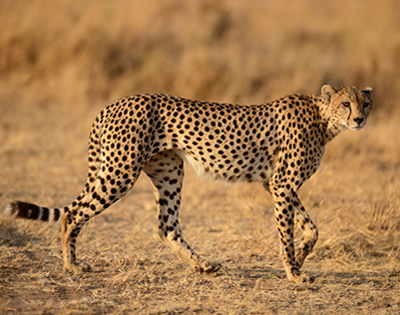
8 Days Gorillas & Tanzania Safari
8 Days Gorillas & Tanzania Safari takes you Gorilla Trkeking and Wildlife Safari at Sernegeti Tanzania.
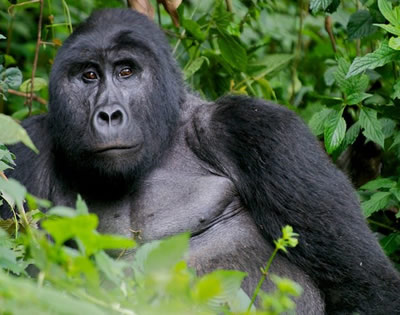
9 Days Rwanda Gorilla Trekking & Culture
9 Days Rwanda Gorilla Trekking & Culture takes you Mountain Gorilla Trekking and Cultural Safari.
Activities to do in Bwindi Impenetrable National Park.
Gorilla Trekking.
In Bwindi Impenetrable National Park, gorilla trekking is an exhilarating adventure that takes you deep into the tropical rain forest to find mountain gorillas. Approximately 19 habituated gorilla families reside in the national park; they are divided into four sectors: the north’s Buhoma sector, the south’s Nkuringo sector, the east’s Ruhija sector, and the south’s Rushaga region.
Gorilla trekking in Bwindi impenetrable national park start very early in the morning at around 8:00 a.m. with a briefing at the park’s headquarters. After the briefing you will be sub divided into groups of 8 people where each group is allocated a gorilla family to trek and a park guide who is well conversant with different trails in the jungle.
Depending on where the mountain gorillas are located, a gorilla trek in Bwindi National Park might take anything from 30 minutes to seven hours. uganda gorilla trekking tours offer the opportunity to observe a range of primates, including baboons, I’hoest monkeys, black and white colobus monkeys, a variety of bird species, and vegetation.After locating the mountain gorilla family, you will have an hour to spend with them, during which you may see them play, feed, nurse, and groom the young, among other things. You can also capture pictures and videos of them.
Gorilla Habituation.
Another amazing and extraordinary activity in the Bwindi Impenetrable National Park is the gorilla habituation experience, which gives you the opportunity to spend four hours with the mountain gorillas as they become accustomed to you.
The process of gorilla habituation, which takes two to three years to finish and requires a team of researchers, scientists, park rangers, and trackers, teaches wild gorillas to become accustomed to human presence in order to facilitate trekking. The gorilla habituation experience, which is limited to the southern Rushaga section of the Bwindi Impenetrable National Park, begins with a briefing at the park’s headquarters.
The gorilla habituation experience permits a maximum of 4 individuals to visit a group throughout the habituation process. Throughout the trekking trip, several wildlife species such as animals, birds, plants, and tree species can be observed. You will be able to spend four hours in the gorillas’ natural habitat after they are located. This will allow you to observe their daily routines, observe their habits, and discover more about the naming process, among other things.
Bird watching.
Bird viewing is one of the top 8 activities in Bwindi. Impenetrable National Park is a birder’s dream come true because of its impenetrable jungle. A total of 350 distinct bird species have been documented in Bwindi; of these, 23 are unique to the Albertine Rift and 14 have never been documented globally! Birdwatchers visiting the park should look out for a number of species, including the short-tailed warbler, blue-headed sunbirds, Rwenzori nightjar, and the African Green Broadbill, which is unique to the Ruhija sector and the Congo. Do not forget to bring your binoculars.
Batwa cultural experience.
The Batwa are a group of people who were evicted from the Bwindi Impenetrable Forest and settled as squatters in the districts surrounding the park. Visitors to the Batwa cultural experience will learn about their rituals and way of life. Throughout the cultural experience, the Batwa people will share their knowledge of the plants they used for food and medicine, as well as how they hunted, cooked, built fire out of unexpected objects like sticks, and lived. These people had long coexisted with the forest’s fauna and flora and were mostly dependent on it. You will also be treated to odd dances and gloomy music throughout the evening.
Forest walks/ hiking.
Taking one of the park’s well-planned guided nature walks is a terrific way to explore and learn about the forest with the assistance of a ranger. Visitors can access the park’s beautiful waterfalls by walking along the Munyanga River route. Depending on where you are staying, the Rushaga or Buhoma gates are where you start this walk. This climb takes roughly three to four hours. Particularly wonderful are the Buhoma-Nkuringo and return routes, which provide enough opportunities for peaceful woodland exploration and birdwatching. Hiking this trail might take up to six hours.
Mountain Biking.
Since it provides the best riding experience, mountain biking is the most fun thing to do in the Buhoma area. The event is being organized and rented out by the local group Ride 4 a Woman. The tour guides will impart their knowledge of the region, the locals, their way of life, and the numerous bird species they have witnessed. There are hotels in other parts of Bwindi that provide horseback riding, but bookings are always necessary in advance.
Buhoma community walks.
This could be feasible for tourists that stay in or hike in the Bwindi Buhoma region. Joining the Buhoma community tour allows visitors to witness and experience the area’s long history of winemaking, in addition to meandering through the hamlet and stopping at a school, hospital, and traditional healer with the assistance of their guides. By walking in this event, which is being organized by the Buhoma community, you are directly supporting the community.
Lake Mutanda visit.
After finishing their gorilla trekking, tourists can unwind in Lake Mutanda, which is in the southern park area. It’s a beautiful, serene place. Take a dugout canoe tour of several islands in the lake; a guide is required. Lake Mutanda offers breathtaking sunsets.
You may be guaranteed an enjoyable yet relaxed trip by choosing any of the top activities in Bwindi Impenetrable National Park that are listed above. You will undoubtedly remember your Bwindi safari if you take the time to plan it with a reputable travel company.
Gorilla trekking in congo (packages)
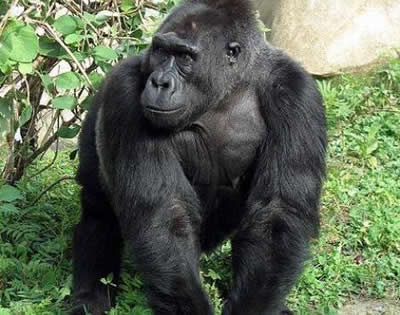
3 Days Congo Gorilla Tour
3 Days Congo Gorilla Tour to Virunga National Park is exceptional to do as you watch Mountain Gorillas.
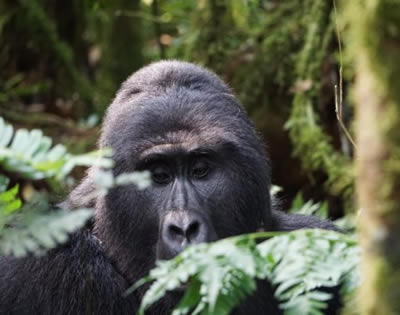
4 Days Congo Gorilla Tour
Trek the Eastern Lowland Gorillas of DR Congo at Kahuzi Biega National Park situated after Bukavu Town.
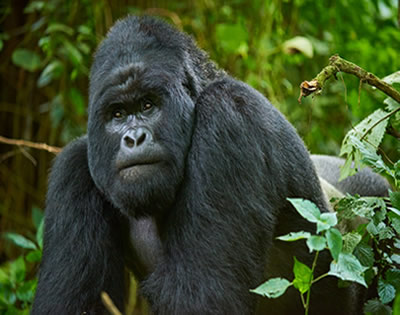
6 Days Congo Gorilla Safari
6 Days Congo Gorilla Safari offers you Mountain Gorilla and Eastern lowland Gorilla Trekking Adventures.
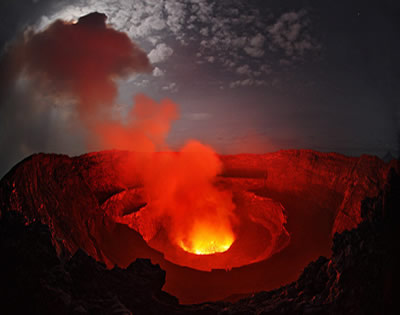
7 Days Congo Gorilla Safari
7 Days Congo Gorilla Safari gives you unique Mountain Gorilla and Eastern lowland Gorilla Trekking Advnetures.
Gorilla families in Bwindi impenetrable national park.
Are you interested in learning more about Uganda’s numerous gorilla populations? would you like to hike to the best gorilla group in Uganda? Uganda has got over 14 habituated gorilla families, with a silverback gorilla (the group’s eldest male) leading each group of 10 to 40 individuals of varying ages.
Twelve gorilla groups in the Bwindi Impenetrable National Forest Park are habituated, and two additional gorilla families are trainable. Only eight licenses are available per day for each gorilla group. Gorilla families get their names from the legend surrounding their origins, the group’s geographic location, and the moniker of the silverback leader.
Mgahinga National Park is home to only the Nyakagezi group of gorillas in Uganda. Even though Mgahinga is home to one of the largest gorilla families in the world, not many tourists come there for gorilla tours. If you want to spend time with gorillas up close, Mgahinga Gorilla Park is the ideal location to go. The following paragraphs provide an overview of all available information for each troop of mountain gorillas in Uganda. Below are the gorilla groups in Uganda:
Gorilla families in Buhoma
BUHOMA.
Mubare.
This Mubare group consists of 19 members, one of them known as a silverback. This Mubare group was founded in 2002 after Rwansigazi and Mwirima broke from the larger Habinyanja faction. The name Rushegura is derived from the word “Ebishegura,” a kind of tree that regularly occurs in the home area of the Rushegura family. Despite the fact that the family increased in size from 12 to 19 by April 2010, Mwirima’s ability to create a stable and peaceful home is commendable. Mwirima is a powerful, 25-year-old man who commands respect. Any wild groups that threaten his dominance are never avoided by him. The groups are not frightened of people and are frequently seen in the lodge gardens due to their poise and steadfastness.
Rushegura.
The Rushegura group has got over nineteen members, one of which is a silverback. Following Rwansigazi and Mwirima’s split from the bigger Habinyanja faction in 2002, this group was established. The word “Ebishegura,” which refers to a particular type of tree that frequently grows in the Rushegura family’s hometown, is the source of the name Rushegura. It is impressive that Mwirima was able to establish a secure and tranquil home, even though by April 2010 the family had grown from 12 to 19. Mwirima is a strong, 25-year-old man who demands to be respected. He never shies away from wild groupings that pose a threat to his rule. Because of their calm and perseverance, the groups are not afraid of humans and are often spotted in the lodge gardens.
Habinyanja.
This gorilla group was among the first to welcome visitors. With the departure of Habinyanja, Makara is now in charge of the group, which consists of 17 members. Silverback In 1997, this group formed a routine, and Mugurisi assumed command. (A mature student). Since the group was first discovered close to a marsh in Bwindi, they were given the name “Habinyanja” (place with water) in Rukiga. Mugurisi’s two brothers, Rwansigazi and Mwirima, each with a distinct personality, took control after he died of old age. Rwansigazi loved to explore new areas of the forest, but Mwirima preferred to stay put. The two brothers progressively drifted apart around 2002.
After becoming known as the Rushegura family, Rwansigazi broke away from a portion of the Mirimas group, although they continued to use the name “Habinyanja.”
Gorilla families in Nkuringo
NKURINGO.
Bushaho.
This is the second gorilla family in NKuringo Sector of Bwindi Impenetrable National Park. Bushaho can now be reachable for gorilla trekking thanks to Uganda Wild life Authority. The dominant Silverback, Bahati, is leading the pack.
Following the death of Silverback Nkuringo, investigators searched the Nkuringo family to discover the location of individuals who had mysteriously left the family. They learned that Bahati, one of the silverbacks of the former Nkuringo group who had vanished earlier, was in charge of a rival group. This group consisted of both non-habitual individuals and ex Nkuringo group members.
The social dynamics inside the parallel group were closely examined in a later exercise. The gorilla family’s original name, “Bushaho,” translates to “there’s nothing” in the local tongue. The group later became accustomed to this term after being habituated. One of the three gorilla families in the Nkuringo Sector, south of Bwindi, that can be visited for gorilla trekking is the Bushaho family.
One of the funniest gorilla groups in Bwindi is the Bushaho family. Being the alpha male, Bahati takes great pleasure in boasting about his amazing physical abilities. He may get up and fling objects, charge at the crowd, and pound his massive chest all the while growling menacingly or barking loudly. Notwithstanding these demonstrations and the giant’s seeming physical might, Bahati is normally composed and non-aggressive until provoked.
Nkuringo.
This gang of nineteen people was once led by Nkuringo the Great Silverback. His two silverbacks, Rafiki and Safari, were left behind after his death in 2008. Safari, his son, was the heir. The group is referred to as “Nkuringo” in Rukiga since it was first discovered next to a circular hill. Due to their proximity to the communities outside the park, the gang frequently interacted with the public and got into arguments when they smuggled food. The group was picked in 2008 to become accustomed to their surroundings in an effort to help the locals gain economically from tourism and recognize that gorilla conservation offers them opportunities.
Christmas.
This is third gorilla group in Bwindi’s Nkuringo Sector, where gorilla trekking is available. Christmas, the dominant silverback of the Nkuringo Group, was born on Christmas Day, therefore that’s the reason as to why it was called Christmas.
When the Nkuringo group broke off to establish the Christmas gorilla family, they did not have to go through the habituation procedure because each member came from a completely habituated family.
The Christmas group was recently joined by a new adult female from the wild. Her little son appeared from behind her or from the bushes and accompanied her. Since the mother and son are still getting used to other people, they keep their distance while guests stay with the family.
After Rafiki’s passing, Kiza joined the Nkuringo Group, and on May 16, 2022, she gave birth to a new kid.
Posho.
This group is still going under the habituation process in the Nkuringo Sector of Bwindi impenetrable national forest park. With fourteen members, the dominating Silverback Magara group rules the area.
The Posho group will soon be accessible for the Nkuringo Sector Habituation Experience, according to internal sources with the Uganda Wildlife Authority. This is a much anticipated advancement because the experience is limited to the Rushaga sector.
Gorilla families in Ruhija
RUHIJA.
Bitukura.
The Bitukura Family used to have 24 members, but now there are just 14. Ndahura, who succeeded the now-retired Karamuzi, is in charge of the group. The tribe was called after a river that borders their region; there are three other silverbacks in the tribe. In contrast to the two or more years it takes mountain gorillas to acclimate to their surroundings, this family did so in just 15 months. Before tourists were ultimately permitted entry in October 2008, park officials would frequently approach the group anytime they interacted with the Kyaguriro family, who had already developed a routine.
Oruzogo.
Oruzogo group is a large traditional family consisting of over twenty-five members. This is a second group in the Ruhija region, consisting of two silverbacks. Tibirikwata is in charge of the group that welcomed visitors for the first time in 2011. The group has expanded and gained popularity among tourists as a result of the happy progeny that have been born from the females Ntamurungi (June 2011), Musi (October 2011), and Kakoba (March 2012).
Kyaguriro.
Kyaguriro group has got over fifteen members and these include the Kyaguriro gang, and Rukina, the former Zeus’s commander, in control. Because environmentalists have split up the gorilla troop for scientific purposes, only a select few tourists are permitted entry. This group has produced some intriguing discoveries for scholars. Their research indicates that there are some behavioral differences amongst the gorilla families in the Congo, Rwanda, and Uganda.
Mukiza.
The Mukiza group, led by the commanding silverback Mukiza, is located in the Ruhija tourism region of Bwindi Impenetrable National Park. Following the demise of the first Kyaguliro organization, the group was created in May 2016. The Mukiza group also has a significant interest in gorilla studies at the Max Planck Institute for Evolutionary Anthropology. There are currently 13 members of the group: 1 silverback, 6 adult females, 1 sub-adult, 2 adolescents, and 3 neonates. Make plans for a gorilla safari with Adventure Safaris to witness gorilla groups in the Ruhija region. We will obtain gorilla permits for visitors that make reservations with us for gorilla trips.
Gorilla families in Rushaga
RUSHAGA.
Bweza.
The organization had visitors in 2013. After splitting from the Kahungye family in 2012, Busingye is the organization’s current leader. Busingye, whose name means “peace,” is infamous for inciting conflicts and stealing female gorillas from neighboring groups. As an opponent, he is quite strong and will take any opportunity to show off his power and goals.
Busingye.
In 2013, guests hosted the Busingye group. Having broken away from the Kahungye family in 2012, Busingye is currently in charge of the organization. Busingye’s name means “peace,” but he’s notorious for regularly instigating fights and snatching females from nearby gorilla groups. He is a formidable opponent who takes advantage of any chance to flaunt his dominance and aspirational objectives.
Nshongi.
The Nshongi family was the largest family ever discovered when it was found in 2009, with 37 members. Of the twenty-six members that presently reside there, four of them are silverbacks. The family was given the name Nshongi, which alludes to the river’s deep honey hue, when they were first discovered next to a river. When the family opened their home to visitors in September 2009, their size was unusual. Notwithstanding the multiple silverbacks, the family cohabited amicably until 2010. The Nshongi group, led by the dominant silverback Nshongi, remained at 26, while silverback Mishaya moved on with ten members.
Kahungye.
Kahungye group has got over 13 members with three of them which are silver backs led by Rumansi. The two other elderly males are named Rwigi and Ruhamuka. The organization’s first guest entry was only authorized in 2011. The initial 27 members of the Busingye organization broke up as soon as it was founded. The head of the Kahungye group is Gwigi, referred to as “door” in the local vernacular.
Mishaya.
Mishaya was well-known for stealing female gorillas from nearby communities before he left Nshongi in 2010. Additionally, he had a history of starting fights between competing gorilla groups in an attempt to defend his own. He was wounded fighting a troop of wild gorillas, but he managed to capture a few of the unharmed females. By chance, he was able to get local gorilla conservationists on board. Out of the twelve silverbacks, Mishaya is the only one in dominance.
Since this park is the only place in which gorillas may be found, Uganda Wildlife Authority only sells eight gorilla permits there every day.
Gorilla trekking Age limit.

Are you interested in trekking the endangered mountain gorillas but are wondering about the minimum and maximum ages allowed for trekking in Bwindi Impenetrable National Park/mgahinga in Uganda? No more worries, according to Uganda Wildlife Authority policy, the minimum age for mountain gorilla trekking in Bwindi Impenetrable National Park is currently 12 years old. This means a child under 11 years of age and below is not allowed to trek to these primates. A child may opt to create noise or run, which could result in gorillas charging and acting wild to tourists. In order to prevent this, children are not permitted to trek gorillas in Uganda’s Bwindi Impenetrable National Park.
The age limit for gorilla trekking in uganda apply when trekking with gorillas. Children under the age of 11 and below are not permitted to trek mountain gorillas in Bwindi Impenetrable National Park for a variety of reasons,
including the fact that youngsters frequently have contagious illnesses that can easily be passed on to gorillas because people and mountain gorillas almost have identical genes. Conditions like the flu and the common cold are particularly easy to spread between humans and gorillas. The walk can occasionally be challenging due to Bwindi’s mountainous terrain, potential for slipping, and rugged terrain that children might not be able to handle.
What to do if your child doesn’t fall in between the allowed age for gorilla trekking.
Children under the age of twelve who are unable to go gorilla trekking may nevertheless accompany their parents on a trip. This is because the park offers a plethora of amazing things for your child to engage in while you search for the gorillas. While the hotel staff keeps kids occupied with games and cartoons, you can leave with them. They can also be used for park strolls, visits to nearby schools, and cultural excursions. You may decide to delay your trip so that you can take the kids when they are old enough.
Frequently Asked questions about gorilla trekking in Bwindi (FAQ)
Why book with us gorilla trekking in Bwindi impenetrable National Park?
Interesting gorilla trekking safaris to Uganda and Rwanda can be planned by Activie African Vacation with ease. We have excellent ratings and reviews on Trip Advisor as well. In order to provide you with the best and most memorable African safari experience, we combine gorilla trekking safaris with eco-friendly, unforgettable high-end adventure and wildlife safaris that support the conservation of biodiversity, the welfare of wildlife, and the upliftment of local communities. These safaris include chimpanzee trekking, Big 5 safaris and game viewing, Mountain Hiking, Boat cruise excursions, and Cultural encounters, and they include well-known and fantastic African safari destinations such as Tanzania, Kenya, Botswana, and Contact us if you have any questions about the minimum and maximum age requirements for gorilla trekking.
Where can I trek gorillas in Uganda?
Gorilla trekking is available for tourists in two national parks in Uganda. Among these are the Bwindi Impenetrable National Park and the Mgahinga National Park. Still, most hikers enjoy passing through Bwindi since it has the highest population of mountain gorillas and has affordable, visually appealing hotel alternatives. However, as there are no appreciable variations in the cost of the trekking permit, a customer is free to hike in any park, no matter which is closest to them or where they are coming from.
When is the best time to go for gorilla trekking in uganda
Uganda has got two seasons and that is the low season and the high season also referred to rainy and dry season. During the months of march to May, there are always high rains and therefore the clients for trekking the mountain gorillas are always very few because of the conditions in the park. such as the sliding grounds in the jungle, very cold and rainy weather and so many others. However, the best time to do gorilla trekking in uganda is during the months of October to November, the rains are very limited and therefore this is sometimes referred to as a dry season. These months attract a lot of clients who come for trekking in the jungle because the weather is always conducive and therefore there are limited number of accidents in the jungle while hiking in search for the gorilla families.
Securing a gorilla permit.
The cost of gorilla trekking permits in uganda are at a fixed price so far of 700 dollars however recently Uganda Wildlife Authority raised the price by $100 which will be $800. This will start with effect on 1st July 2024. For someone who would like to secure himself or herself a gorilla permit, should do that both in low and high season because this time round there is no more discount on gorilla permits. However, the permits are sold very highly during the peak months and that is the months of January to February and then June to August. This is because the parks have a conducive climate together with the weather that enables the clients to do their trip well and take the pics clearly without any disturbance. More so, during these months, the jungle is not slippery it is rather very dry and hence enables the clients to perform their activities well without falling down because of the sliding surface.
How difficult is gorilla trekking in uganda?
Keep in mind that fear is transient, but regrets last a lifetime. Due to the challenging times and circumstances that make trekking challenging, many individuals are afraid to travel to any country where gorilla families reside.
The following are the factors that make trekking difficult.
The cost of gorilla trekking.
Going on a gorilla safari in Uganda, you need a permit which costs $700, but going to Rwanda for a gorilla trekking safari, the permit costs $1500.This increases people’s fear of the expensive gorilla permits. However, effect from 1st July, 2024, trekking gorillas in Uganda will cost $800
Location of the mountain gorilla family.
It can be very difficult to allocate the mountain gorillas at times because they graze over such large regions. such as the Mubare, the Bwindi gorilla family Habinyanja, and numerous others. Thus, this occasionally makes it impossible for the clients to complete their gorilla trekking experience.
The time, year and season of trekking mountain gorillas.
Trekking with mountain gorillas is possible throughout the year in national parks. It is advised, therefore, that clients travel and hike from December to February or from June to September. This is because these are reliably dry months, which provide easier and more trouble-free climbing for tourists. For instance, they don’t slide and fall in the bush while tracking gorillas or encounter bad weather when they visit volcanoes. Because the paths are constantly very dry, clients may move through the jungle without any problems.
The age limit of the mountain gorilla trekker.
In order to locate the gorilla families, the tour requires hiking, thus participants must be fit, responsible adults who are at least 15 years old. Youngsters under the age of fifteen are not allowed to go gorilla trekking since there’s a chance they could get lost or even faint. As such, this adds to the overall challenge of hiking with gorillas.
Fitness and the ability and health of gorilla trekkers.
People with health issues find it tough to trek because it takes hiking in order to see the primates. More so, it gets difficult for the elderly to climb up and traverse these primates since they have grown too big and their bones are too weak. Thus, in order to walk with gorillas, one must be physically strong, enthusiastic, and free of health issues in order to climb the mountain.
What to wear on a gorilla trek?
This is a very important aspect for clients to know what to wear when going for gorilla trekking in uganda and arrange prior to beginning their adventure through the park. You must always pack heavy jackets and sweaters to stay warm in the well-known frigid primate parks, particularly Bwindi. In contrast, the weather varies greatly amongst parks. It thus relies on the particular circumstances you have encountered there.
Below are the clothes to wear in the park depending on the weather.
- Water proof gumboots and shoes that will help you even move in the rainy time without feeling any water.
- Shirts which are long sleeved to help you from the itching leaves and the branches in the jungle.
- Trousers which are somehow lighter to give you freedom while moving and peace.
- Remember to carry rain coats and umbrellas.
- Remember to also carry gloves to help you from the thorns and the cutting grass in the jungle.
The rules and regulations of gorilla trekking.
Below are the rules and the regulations of trekking the mountain gorillas.
- Avoid mimicking the mountain gorillas while next to them.
- Avoid feeding the mountain gorillas.
- You should not put on the flash of the camera while taking the photos of the gorillas. This is because this scares them and hence end up getting angry and aggressive.
- Avoid throwing rubbish in the trekking area for the gorillas.
- Avoid coming next to the mountain gorillas because you might cause them a cold in case you have. These animals can quickly be attacked by diseases.
- You must keep a distance of over 7 meters far away from the mountain gorillas.
- Avoid overcrowding when you come next to the gorillas.
- Avoid making noise when you reach these gorillas. This is because this might make them angry and so aggressive hence making them to attack you.
Are gorilla sightings guaranteed?
As per now the gorilla sightings are not guaranteed. Therefore, you have a task of hiking up into the jungle to trek yourself and look for the mountain gorilla families.
Finding the mountain gorillas is sometimes luck because they graze too far into the jungle. However, no one has ever failed to find them. If you fail to re allocate the gorillas, Uganda Wildlife Authority is ready to refund 50% of your money.
What to expect on a gorilla safari?
The truth of the fact is that gorilla trekking is a very impressive experience all-round the years since it happens throughout the year. However, the biggest number of people who trek the gorillas is always in dry seasons because there are no incidences of accidents and falling down while in the jungle.
Gorilla trekking in Africa is done in the countries of Uganda, Rwanda, and the republic of Congo.
The trekking begins very early in the morning at 7 am with a briefing at the pack headquarters about the rules and regulations of trekking the gorillas. From there, you are divided into a group of 8 members in each group who then enter into the jungle to start off the trekking. Once you get these primates, you are given ample time to relax with them, take photos and then have fun.
Hiking, drinking water, gloves, the sun glasses to also help you from the direct sunlight, the Umbrera and rainfall jacket to help you from the rains while in the jungle trekking and so many others.
Hiking in the wild to search for the gorilla families.
After having your morning tea, you will get to the park headquarters to have a briefing and then get to the park to start the trekking. The expected real time for trekking should be 30 minutes but however it sometimes the trekking extends up to one hour or more because of the gorillas going into the jungle to start the trekking.
An encounter with gorillas in Africa.
This is a period of time when the clients are ready to move with these primates and interact with them, take photos and then have fun. During this time, the clients are required to keep their voices low, keep a distance from them to avoid infecting them with diseases, avoid direct looking into their eyes, keep calm incase attacked by the gorillas, avoid the disposal of human wastes and lastly avoid feeding the gorillas.
Awarded tracking certificates.
This is usually offered to trekkers as proof that they have spent time in the jungle with the mountain gorillas, following an hour-long trip.
What country provides the best option for seeing the mountain gorillas? Compare Uganda and Rwanda.
The commonly asked question is that what is the best country for a client to trek? The truth is that this is usually a tricky question to answer because all the countries say Uganda and Rwanda all have gorillas and have accommodations where to stay while trekking. Therefore, all countries are ready to welcome you and book with you for trekking. However, most people prefer Uganda because it provides prices which are quite lower than those of Rwanda and that is Uganda pays 700 dollars for the gorilla permit and Rwanda charges 1500 dollars. This price makes most clients to go and book with Uganda hence leaving Rwanda.
NOTE: Clients are asked to keep calm and not to complain about the high price of gorilla trekking because some of the money is used to keep the population of the mountain gorillas growing so that you find them next time. More so on the other hand, after trekking and having spent an hour with the gorillas in the jungle, you are given a certificate to thank you and to prove that you have been in Uganda trekking.
Which company should I use for gorilla trekking?
It is believed that there are many tour companies and very many tour operators in Africa that you can use to get the gorilla permits and book for gorilla trekking uganda trips. However, a client chooses a company to use depending on the price offered to him or her, the availability of the gorilla permits in plenty, the marketing on websites, the customer care given to the client, and the reviews plus comments made on that company by different people who normally use it
How to get a gorilla permit price?
Gorilla trekking in Uganda is the most profitable and done activity that every client who ties to book it’s the only activity he or she does. The trekking in Uganda is done in the parks of Bwindi impenetrable national park and Mgahinga national park. All the gorilla permits are at the same price and that is at 800 dollars in Uganda and in both parks. These permits are got by booking with a trusted tour operator in one of the companies in Uganda such as Activie African Vacation. The permits are booked in advance, say 6 months before the trekking time to avoid inconvenience and overcrowding while looking for the permits.
NOTE: A client is advised to book the permit from a specific company and a tour operator to get an advice on which gorilla family is available to trek to avoid booking of a gorilla family which is too far and will give you hard time to trek and look for hence end up not seeing the family and incurring a lot of money.
More so the other advantage is that when you book with these operators, they help you get rangers who will help you find the gorilla families because they always know where they are located and they are also trained to do that.
